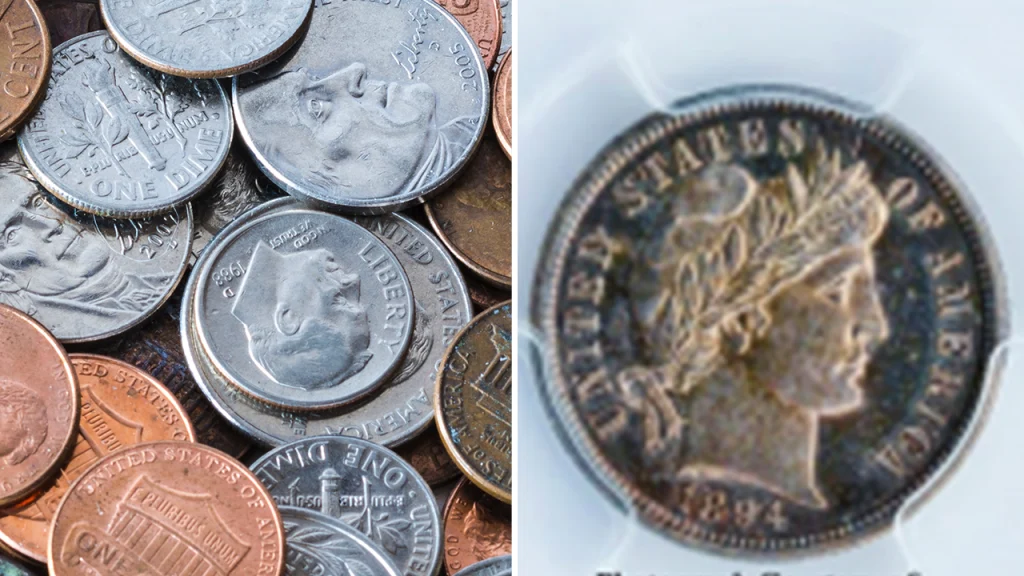Rare United States coins offer a glimpse into American history and can hold generational wealth. One highly coveted coin is the 1894-S Barber dime, one of the most sought-after and prized rarities in U.S. history. Only 24 of these dimes were issued in San Francisco in 1894, with only nine known to survive. The coin’s rarity and the story behind it, involving a little girl named Hallie Daggett and her father who worked at the San Francisco Mint, contribute to its significant value.
The coin’s namesake, Charles E. Barber, served as the Mint’s chief engraver and designed about thirty medals, including presidential inaugural medals and American Indian peace medals. Barber’s designs were influenced by English styles and classical antiquity, with his portraiture highly praised by contemporaries and collectors. The 1894-S Barber dime features “Miss Liberty” facing right, donning a wreath with the word “liberty” written above her forehead, made of 90% silver and 10% copper. It is unknown why only 24 coins were produced in San Francisco, but whenever one surfaces for sale, wealthy collectors show great interest in acquiring it.
Blanchard & Company, a rare coin and precious metal firm, has handled the sale of the 1894-S Barber dime on three occasions, pricing it at $1,550,000, $1,900,000, and $2,200,000. David Zanca, Blanchard’s senior portfolio manager, has seen an increase in Americans purchasing rare coins, as many now view them as a long-term storage of wealth. The coins provide a connection to U.S. history dating back to the country’s founding. Zanca noted that the whereabouts of the remaining 1894-S Barber dimes remain somewhat of a mystery, as they could be privately stashed away or circulating as loose change.
Zanca advised potential owners of a Barber dime to check the date on the coin, which should read 1894, and look for the mintmark specifying where the coin was minted. For Barber dimes, the mintmark is located on the reverse of the coin just below the wreath. A lack of a mintmark indicates the coin was minted in Philadelphia, an O mintmark indicates New Orleans, and an S mintmark indicates San Francisco, where the 1894-S Barber dimes were produced. Zanca also cautioned that more counterfeit dimes exist than the original ones, emphasizing the importance of authenticity when assessing the value of a rare coin.
The story behind the 1894-S Barber dime involving Hallie Daggett, ice cream, and her father’s role at the San Francisco Mint adds to its appeal and historical significance. Demand for rare coins with unique stories and limited numbers, such as the 1894-S Barber dime, continues to drive interest and high prices among collectors. With only nine known surviving examples, the few remaining coins hold a special place in the world of numismatics and American history. The connection to Charles E. Barber, the chief engraver responsible for designing the coin, further enhances its value and desirability among collectors and investors.
In conclusion, rare United States coins like the 1894-S Barber dime not only offer glimpses into American history but also serve as valuable assets for generations. The combination of rarity, historical significance, and unique stories behind these coins contributes to their desirability and high prices among collectors. The continued interest in rare coins, as seen through the sale and pricing of the 1894-S Barber dime, reflects a broader trend of individuals using such assets as long-term stores of wealth. As collectors and investors seek to acquire these rare coins with ties to significant moments in American history, the legacy of these coins and the stories they carry will continue to endure.


